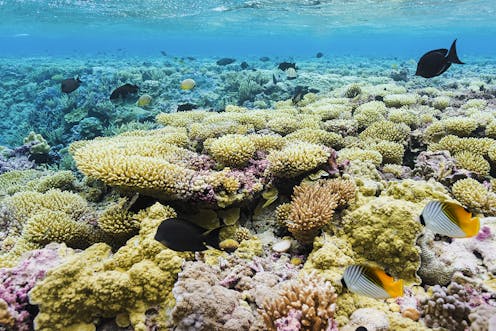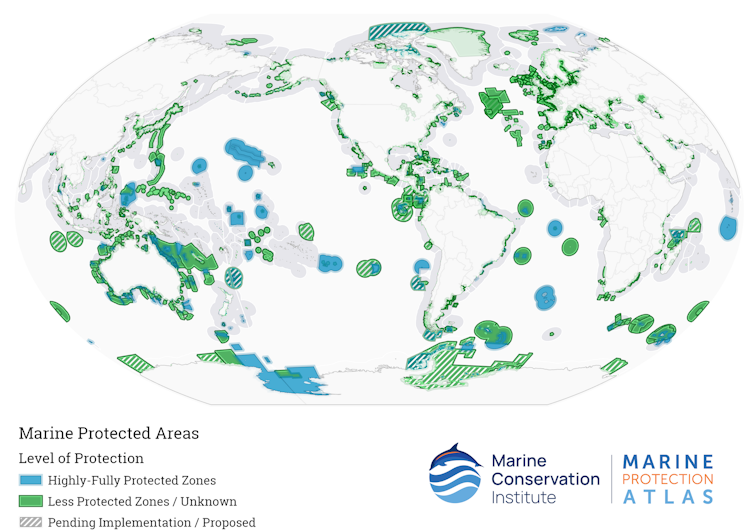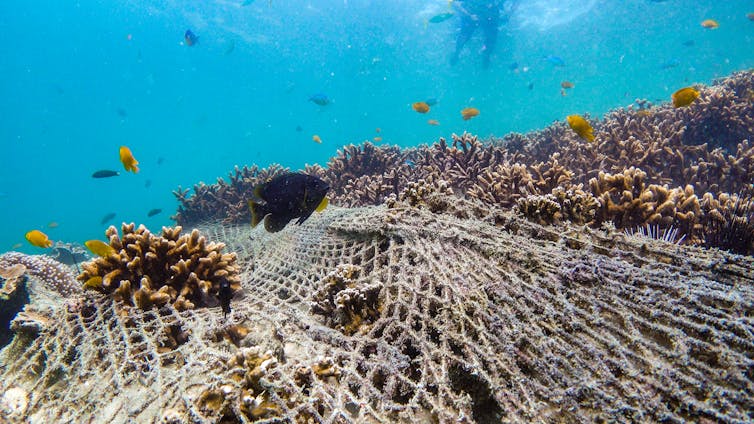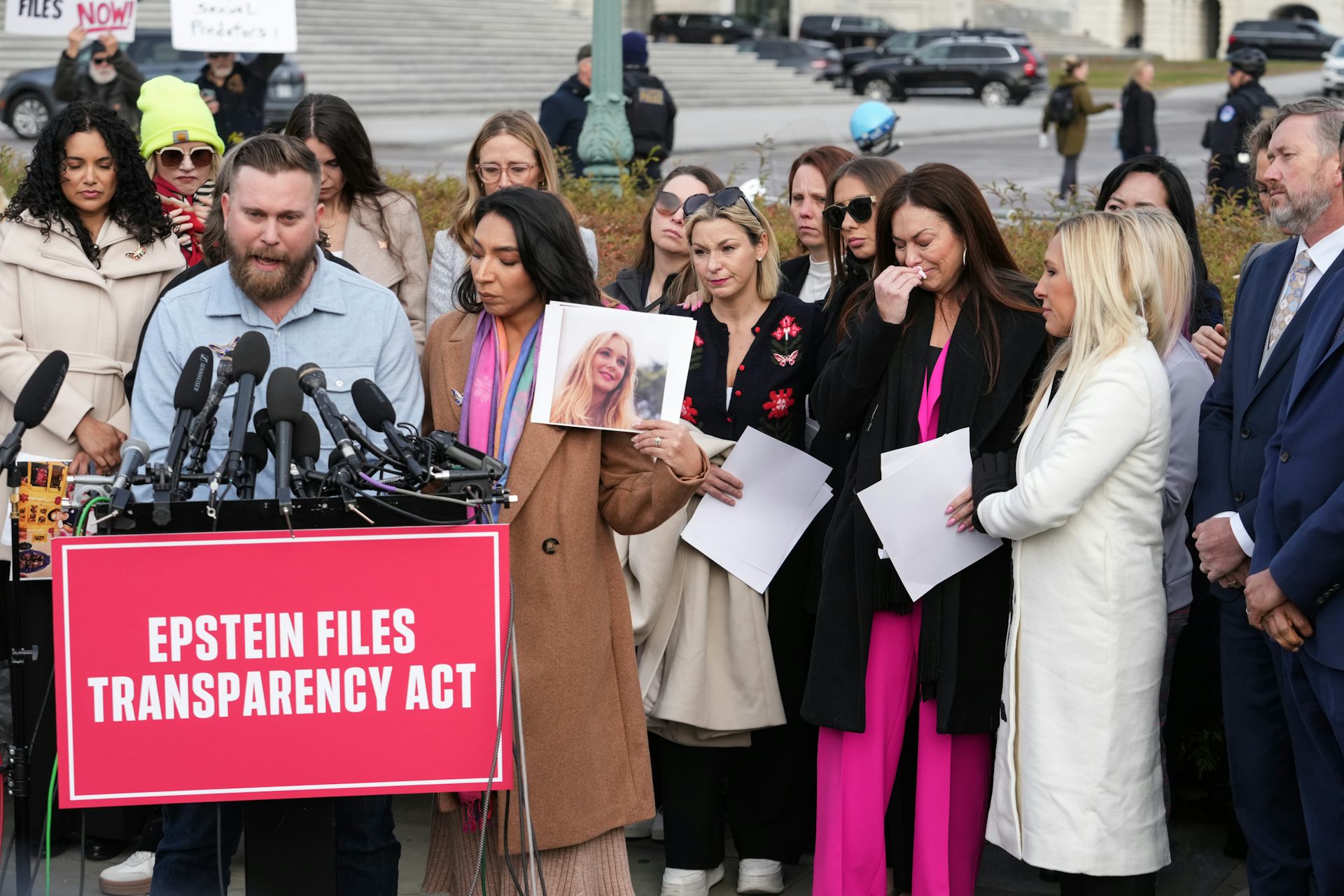Trump is stripping protections from marine protected areas – why that’s a problem for fishing’s futu
America’s marine protected areas help fish populations thrive. Trump’s plan to open them to industrial fishing may ultimately harm the fishing industry itself.

The single greatest threat to the diversity of life in our oceans over the past 50 years, more than climate change or plastic pollution, has been unsustainable fishing practices.
In much of the ocean, there is little to no regulation or oversight of commercial fishing or other human activities. That’s part of the reason about a tenth of marine plant and animal species are considered threatened or at risk.
It’s also why countries around the world have been creating marine protected areas.
These protected areas, covering over 11.6 million square miles (30 million square kilometers) in 16,000 locations, offer refuge away from human activities for a wide variety of living creatures, from corals to sea turtles and whales. They give fish stocks a place to thrive, and those fish spread out into the surrounding waters, which helps fishing industries and local economies.
In the U.S., however, marine protection is being dismantled by President Donald Trump.

Trump issued a proclamation on April 17, 2025, titled “Unleashing American commercial fishing in the Pacific,” ordering the removal of key protections to allow commercial fishing in parts of a nearly-500,000-square-mile marine protected area called the Pacific Island Heritage National Marine Monument.
He also called for a review of all other marine national monuments to decide if they should be opened to commercial fishing too. In addition, the Trump administration is proposing to redefine “harm” under the Endangered Species Act in a way that would allow for more damage to these species’ habitats.
I’m a marine biologist and scuba diver, and it’s no accident that all my favorite dive sites are within marine protected areas. I’ve found what scientific studies from across the world show: Protected areas have much healthier marine life populations and healthier ecosystems.
What’s at risk in the Pacific
The Pacific Island Heritage National Marine Monument, about 750 miles west of Hawaii, is dotted by coral reefs and atolls, with species of fish, marine mammals and birds rarely found anywhere else.
It is home to protected and endangered species, including turtles, whales and Hawaiian monk seals. Palmyra Atoll and Kingman Reef, both within the area, are considered among the most pristine coral reefs in the world, each providing habitats for a wide range of fish and other species.
These marine species are able to thrive there and spread out into the surrounding waters because their habitats have been protected.
President George W. Bush, a conservative Republican, created this protected area in 2009, restricting fishing there, and President Barack Obama later expanded it. Trump, whose administration has made no secret of its aim to strip away environmental protections across the country’s land and waters, is now reopening much of the marine protected area to industrial-scale fishing.
The risks from industrial fishing
When too many fish are killed and too few young fish are left to replace them, it’s considered overfishing, and this has become a growing problem around the world.
In 1974, about 10% of the world’s fish stocks were overfished. By 2021, that number had risen to 37.7%, according to the United Nations Food and Agriculture Organization’s annual State of Fisheries and Aquaculture Report.

Modern industrial-scale fishing practices can also harm other species.
Bycatch, or catching animals that fishermen don’t want but are inadvertently caught up in nets and other gear, is a threat to many endangered species. Many seabirds, sea turtles and whales die this way each year. Some types of fishing gear, such as trawls and dredges that drag along the sea floor to scoop up sea life, can destroy ocean habitat itself.
Without regulations or protected areas, fishing can turn into a competitive free-for-all that can deplete fish stocks.
How marine protected areas protect species
Marine protected areas are designed to safeguard parts of the ocean from human impacts, including offshore oil and gas extraction and industrial fishing practices.
Studies have found that these areas can produce many benefits for both marine life and fishermen by allowing overfished species to recover and ensuring their health for the future.
A decade after Mexico established the Cabo Pulmo protected area, for example, fish biomass increased by nearly 500%.
Successful marine protected areas tend to have healthier habitats, more fish, more species of fish, and bigger fish than otherwise-similar unprotected areas. Studies have found the average size of organisms to be 28% bigger in these areas than in fished areas with no protections. How many babies a fish has is directly related to the size of the mother.
All of this helps create jobs through ecotourism and support local fishing communities outside the marine protected area.
Marine protected areas also have a “spillover effect” – the offspring of healthy fish populations that spawn inside these areas often spread beyond them, helping fish populations outside the boundaries thrive as well.
Ultimately, the fishing industry benefits from a continuing supply. And all of this happens at little cost.
A need for more protected areas, not fewer
Claims by the Trump administration that marine protected areas are a heavy-handed restriction on the U.S. fishing industry do not hold water. As science and my own experience show, these refuges for sea life can instead help local economies and the industry by allowing fish populations to thrive.
For the future of the planet’s whales, sea turtles, coral reefs and the health of fishing itself, scientists like me recommend creating more marine protected areas to help species thrive, not dismantling them.
David Shiffman has consulted for many environmental non-profit groups including the Ocean Conservancy, as well as fishing industry groups and fisheries managment agencies.
Read These Next
West Antarctica’s history of rapid melting foretells sudden shifts in continent’s ‘catastrophic’ geo
A picture of what West Antarctica looked like when its ice sheet melted in the past can offer insight…
From truce in the trenches to cocktails at the consulate: How Christmas diplomacy seeks to exploit s
World leaders like to talk up peace at Christmastime. But alongside the tales of seasonal breaks in…
As DOJ begins to release Epstein files, his many victims deserve more attention than the powerful me
Powerful men connected to Jeffrey Epstein are named, dissected and speculated about. The survivors,…






